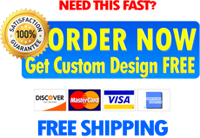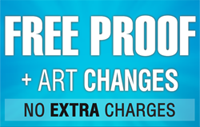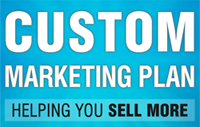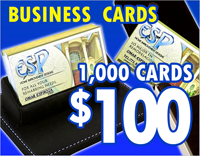Graphic Designs
Graphic design is the art and practice of creating visual content to communicate messages or ideas. It combines elements like typography, imagery, color, layout, and shapes to convey information in a visually appealing and effective way. Graphic design is used in a wide variety of fields, including advertising, branding, web design, print media (like posters, magazines, and brochures), and digital interfaces (like apps and websites).
Key aspects of graphic design include:
- Typography: The style, arrangement, and appearance of text.
- Color Theory: The use of color to create mood, convey meaning, and attract attention.
- Composition: How elements are arranged on a page or screen to create balance and visual interest.
- Branding: Creating a visual identity (logos, color palettes, typography) for a business or product.
- Visual Hierarchy: The arrangement of elements to guide the viewer’s eye and emphasize the most important information.
In essence, graphic design is about creating a visual language that communicates clearly, effectively, and artistically.
What make a great graphic design?
A great graphic design combines aesthetic appeal with functionality, clarity, and purpose. It’s more than just looking good—it serves a clear communication goal and resonates with the audience. Here are some key elements that make a graphic design truly great:
1. Clear Communication
Purpose-Driven: Every design should have a clear objective, whether it’s informing, persuading, entertaining, or evoking emotion. A great design communicates its message quickly and effectively.
Simplicity: Good design doesn’t overwhelm the viewer with too many elements. The message should be immediate and easy to understand, often achieved by simplifying complex ideas or visuals
.2. Strong Visual Hierarchy
Organized Layout: The design should guide the viewer’s eye in a natural, logical flow. Important elements (like headlines or key images) should stand out and be easy to find, while less important information takes a back seat.
Contrast and Emphasis: Use contrast in color, size, or style to draw attention to the most important parts of the design. This helps prioritize the content.
3. Creativity and Originality
Unique Concept: A great design should stand out and offer a fresh perspective. It’s important for designs to be distinctive and memorable.
Creative Solutions: Problem-solving through design is crucial. Great designers use creativity to come up with new and engaging ways to convey a message or concept.
4. Consistency and Cohesion
Unified Design: Whether it’s a logo, website, or advertising campaign, a great design is consistent in its use of colors, fonts, and imagery. This consistency helps build brand identity and makes the design feel professional.
Alignment with Brand: If designing for a brand, the design should align with the company’s values, identity, and visual language.
5. Attention to Detail
Precision: Every element—whether it’s text, icons, images, or colors—should be carefully considered and placed with purpose. Attention to small details, like kerning in typography or subtle shadows, adds polish.
Balance and Spacing: A great design will have proper spacing (white space or negative space) to give the content room to breathe and to avoid a cluttered appearance. This balance makes the design more pleasant to look at and easier to navigate.
6. Effective Use of Color
Color Psychology: Colors can evoke emotions, influence perceptions, and guide action. A great design uses color thoughtfully to create the desired emotional response or communicate the brand’s tone.
Color Harmony: The right combination of colors is essential for visual appeal and readability. A good designer understands color theory and uses complementary colors, analogous colors, or other palettes to create harmony.
7. Typography Mastery
Legibility and Readability: Typography isn’t just about choosing a font; it’s about making sure the text is easy to read and flows well. This includes proper line spacing (leading), kerning (spacing between letters), and font size.
Appropriate Font Choices: The typefaces used should fit the message and tone. For example, a corporate design might use sleek, modern fonts, while a playful design might use more whimsical ones.
8. Emotional Impact
Connection with Audience: A great design taps into the viewer’s emotions, either through imagery, color, or messaging. It resonates with the audience and creates an emotional response, whether it’s excitement, trust, joy, or curiosity.
9. Usability and Accessibility
User Experience (UX): In digital design, such as websites or apps, usability is key. Great designs are easy to navigate and intuitive, allowing users to interact with the design without confusion.
Accessibility: Good designs also consider accessibility, ensuring that all users, including those with visual impairments or disabilities, can experience the content effectively. This can include using high-contrast text, readable fonts, and alt text for images.
10. Timelessness
Longevity: The best designs are those that don’t just follow trends but have a timeless quality. This doesn’t mean they’re stagnant or outdated, but they are able to stand the test of time without losing relevance.
Adaptability: A great design is also flexible enough to work across different mediums and contexts—whether it’s a business card, website, billboard, or mobile app.
In Summary:
A great graphic design isn’t just visually striking; it’s effective and intentional. It communicates the message clearly, feels cohesive and thought-out, and resonates emotionally with its audience. It balances creativity and functionality while ensuring the design has a purpose and can stand the test of time.
Custom Designs Costs:
- Business Cards
- 1 Side $25
- 2 Sides $45
- Postcards & Flyers
- 1 Side $40
- 2 Sides $60
- Posters
- Full Layout $50
- General Graphic Design Ala-Cart $75 per hour. (From sit time: consultation, reviews, q&a session to final files/exporting time delivery.)



























